Let’s explore the enchanting realm of Treeswifts, aerial acrobats that gracefully navigate the skies of tropical forests.
With their streamlined bodies and agile flight, Treeswifts embody elegance and precision as they dart and glide through the canopy.
Treeswifts, members of the Hemiprocnidae family, are avian marvels known for their unique adaptations and specialized lifestyles.
From their cryptic plumage to intricate courtship displays, Treeswifts captivate the imagination and inspire wonder among bird enthusiasts and nature lovers alike.
Join us on a journey through the lush foliage of tropical forests as we unravel the mysteries of Treeswifts, exploring their ecology, behavior, and conservation status.
From their aerial foraging techniques to their intricate nesting habits, Treeswifts offers a fascinating glimpse into the diversity and beauty of avian life in the canopy.
Let’s discover the elegance of Treeswifts, masters of aerial agility in tropical forests.
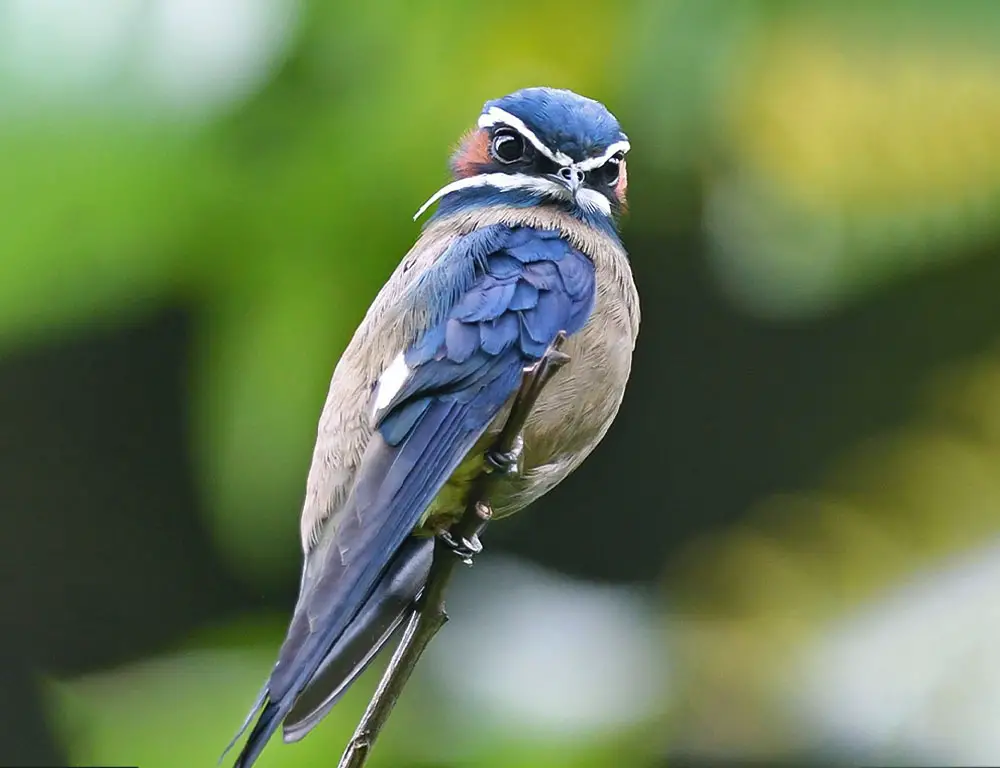
Identifying Characteristics of Treeswift
Treeswifts, called crested swifts, are elegant birds that inhabit tropical forests and woodlands. They possess several identifying characteristics that set them apart from other avian species.
Let’s delve into the distinguishing features and habits of Treeswifts.
Long Crested Tail
One of the most distinctive features of Treeswifts is their long, forked tail, which extends beyond their body in flight. This specialized tail enhances their maneuverability and stability while navigating dense forest canopies.
Cryptic Plumage
Treeswifts have cryptically colored plumage, ranging from shades of gray and brown to mottled patterns that blend seamlessly with the dappled light of the forest.
This camouflage helps them remain inconspicuous among the foliage, protecting them from predators.
Slender Body
Treeswifts have slender, streamlined bodies adapted for swift and agile flight. Their aerodynamic shape allows them to dart and glide effortlessly through the dense vegetation of their forest habitat.
Large Eyes
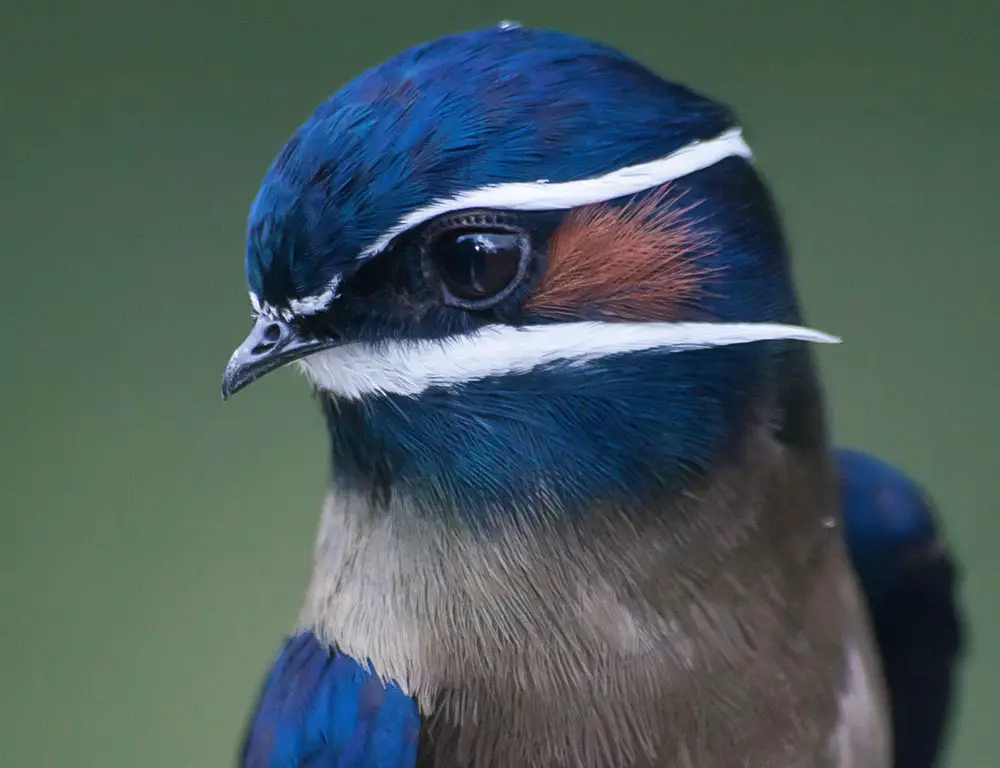
Treeswifts have relatively large eyes compared to their body size, providing them with a keen vision for spotting flying insects, their primary prey. This visual acuity enables them to catch insects in mid-air with precision.
Aerial Foraging
Treeswifts are adept aerial hunters, feeding on a diet of flying insects such as beetles, moths, and ants. They capture their prey in flight using their sharp, curved bills and agile flight maneuvers.
Colonial Nesting
Treeswifts are colonial nesters, often congregating in small groups to breed and raise their young. They build their nests in the high branches of trees, using twigs, feathers, and other plant materials to construct a shallow cup-shaped structure.
Elaborate Courtship Displays
Treeswifts engage in elaborate courtship displays during the breeding season to attract mates and establish pair bonds. These displays may involve aerial acrobatics, vocalizations, and mutual preening, showcasing the birds’ vitality and fitness.
Silent Flight
Treeswifts are known for their silent flight, characterized by soft wingbeats that produce minimal noise. This stealthy flight adaptation allows them to approach prey undetected and avoid attracting the attention of potential predators.
Taxonomy, Distribution, and Breeding Habits of the Treeswift
Treeswifts, elegant aerial hunters of tropical forests, exhibit unique characteristics and behaviors that distinguish them from the avian world.
Delving into their taxonomy, distribution, and breeding habits provides valuable insights into their ecological roles and conservation needs.
Taxonomy of the Treeswift
| Taxonomy Level | Classification |
| Kingdom | Animalia |
| Phylum | Chordata |
| Class | Aves |
| Order | Apodiformes |
| Family | Hemiprocnidae |
| Genus | Hemiprocne |
| Species | Varies by species |
Range Map
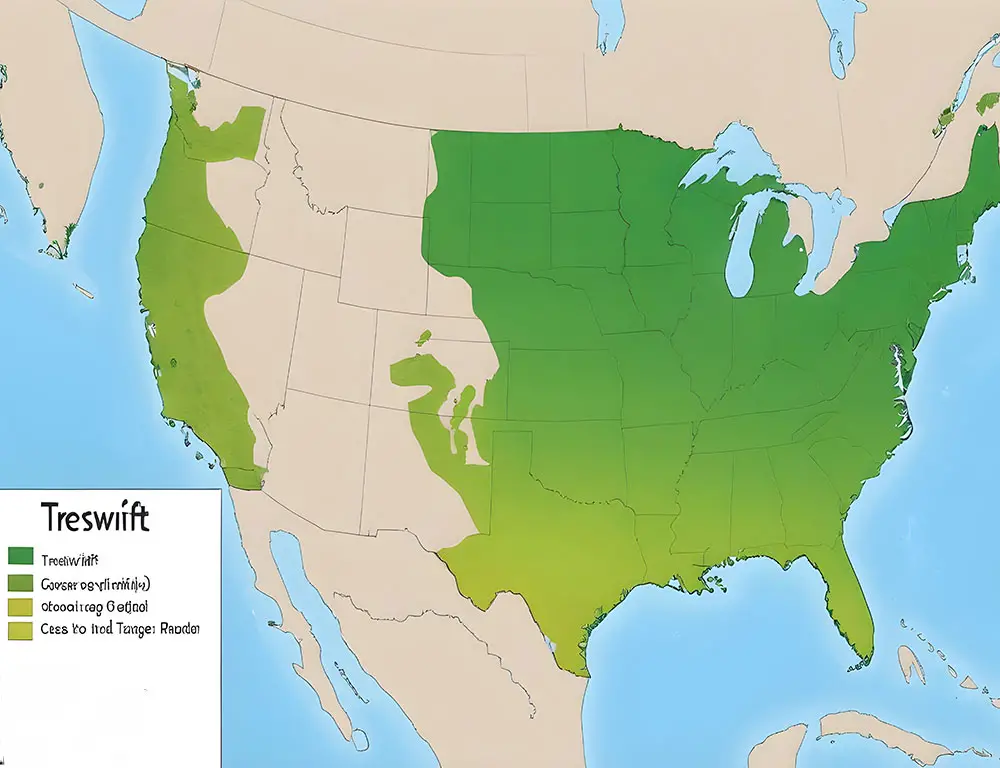
The range map illustrates the distribution of Treeswift species across tropical forests and woodlands of Southeast Asia, the Indian subcontinent, and parts of Africa.
Treeswifts inhabit dense vegetation within these regions, where they forage for insects and breed in tree canopies.
Food Habits
Treeswifts primarily feed on flying insects, including beetles, moths, ants, and termites, which they capture in flight using their sharp bills and agile flight maneuvers.
They are adept aerial hunters, relying on visual acuity to spot prey and swift aerial pursuits to catch them.
Nesting Habits of the Treeswift
| Nesting Habit | Description |
| Nest Location | Likely ground-nesting |
| Nest Material | Possibly built with grass or vegetation |
| Clutch Size | Thought to lay a single egg at a time |
| Incubation Period | Unknown |
| Parental Care | Unknown, but likely cared for chicks after hatching |
Breeding Habits
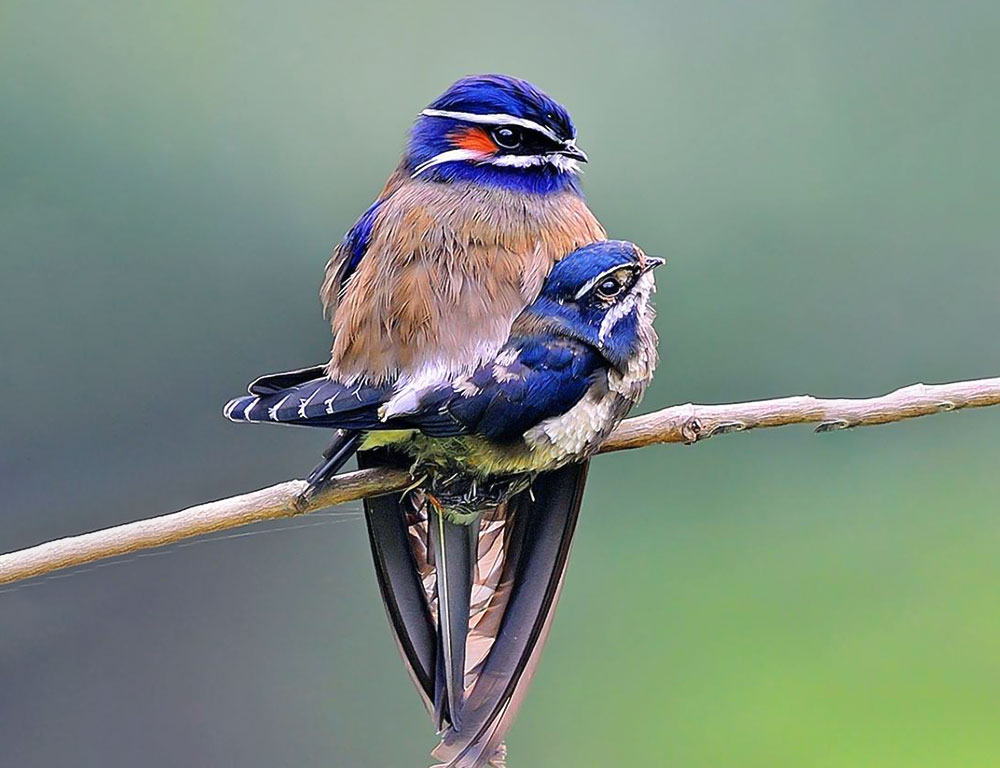
Treeswifts are monogamous breeders, forming pair bonds throughout the breeding season. They construct shallow cup-shaped nests in the high branches of tall trees, using twigs, leaves, and plant fibers woven together.
Both parents share incubation duties and chick-rearing responsibilities until the young fledge from the nest.
Conservation Status
Treeswifts are generally considered of the least concern regarding conservation status, with stable populations across their range.
However, habitat loss and degradation due to deforestation and human activities pose potential threats to their long-term survival.
Conservation efforts focus on preserving intact forest habitats and promoting sustainable land management practices to ensure the continued presence of Treeswifts in their natural environment.
What Are the Common Diseases and Treatments of the Treeswift?
As with any avian species, Treeswifts are susceptible to various diseases and health conditions affecting their well-being.
Understanding common diseases and treatments is crucial for conserving and managing these graceful birds.
Avian Pox
Treeswifts may contract avian pox, a viral infection characterized by wart-like growths on the skin and mucous membranes.
Treatment involves supportive care to alleviate symptoms and prevent secondary infections. Vaccination may be used to avoid spreading the disease in captive populations.
Respiratory Infections
Respiratory infections, such as avian influenza or bacterial pneumonia, can affect Treeswifts, leading to coughing, wheezing, and difficulty breathing.
Treatment includes antibiotics, antiviral medications, and supportive care to improve respiratory function.
Parasitic Infestations
Treeswifts may suffer from external parasites such as mites, lice, and ticks, as well as internal parasites like nematodes and cestodes.
Treatment involves topical or systemic medications to eradicate parasites and reduce bird discomfort.
Nutritional Deficiencies
Poor diet or inadequate nutrition can lead to nutritional deficiencies in Treeswifts, affecting overall health and reproductive success.
Treatment includes dietary supplementation and correcting nutritional imbalances to ensure optimal health and vitality.
Trauma
Treeswifts may experience trauma due to collisions with objects or predators, falls from nests, or other accidents.
Treatment depends on the severity of the injury and may include wound management, pain relief, and supportive care to promote healing and recovery.
Lead Poisoning
Ingestion of lead pellets or contaminated prey can lead to lead poisoning in Treeswifts, causing neurological symptoms and organ damage. Treatment involves chelation therapy to remove lead from the body and supportive care to manage symptoms.
Stress-related Conditions
Stress can weaken Treeswifts’ immune systems and predispose them to various health problems. Management strategies to reduce stressors in captive and wild populations are essential for optimal health and well-being.
Reproductive Disorders
Treeswifts may experience reproductive disorders such as egg-binding or infertility, impacting breeding success. Treatment may involve hormonal therapy or surgical intervention to address underlying causes and restore reproductive function.
6 Interesting Facts About the Treeswift
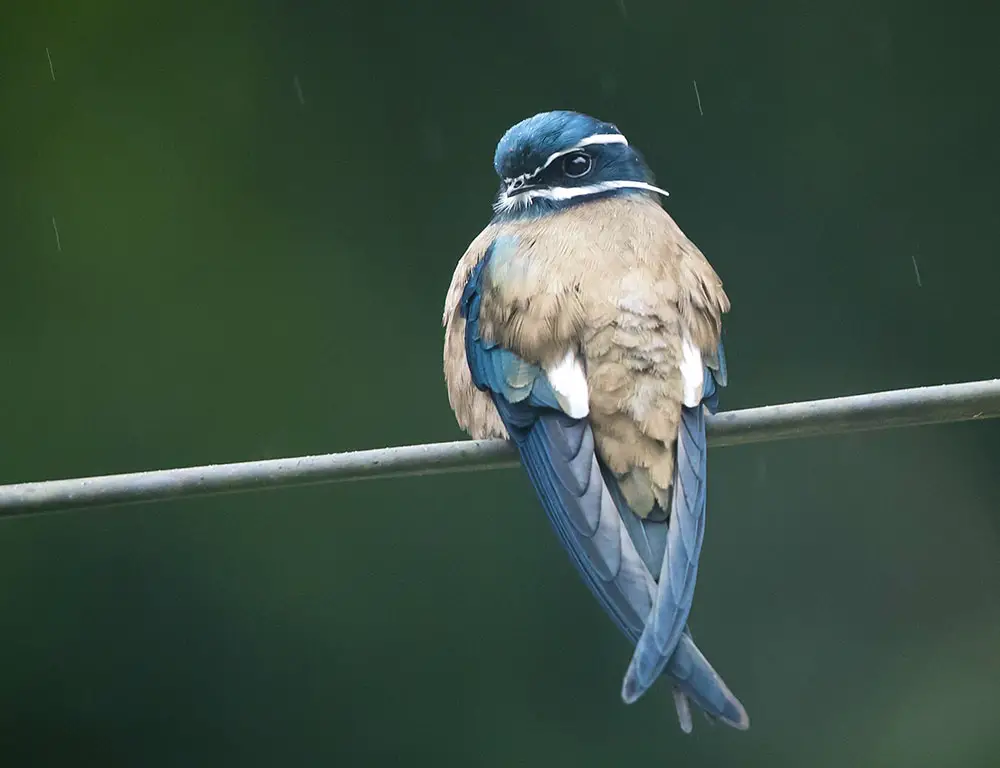
Explore the fascinating world of Treeswifts, graceful inhabitants of tropical forests, with these intriguing facts highlighting their unique adaptations and behaviors.
1. Aerial Hunters
Treeswifts are masterful aerial hunters, capturing flying insects such as beetles, moths, and termites in mid-air with precision and agility. Their sharp bills and swift flight maneuvers make them formidable predators in the canopy.
2. Silent Flight
Unlike many other birds, Treeswifts fly silently, with soft wingbeats that produce minimal noise. This stealthy flight adaptation allows them to approach prey undetected and avoid attracting the attention of potential predators.
3. Long Crested Tail
Treeswifts are known for their long, forked tails extending beyond their bodies in flight. This specialized tail enhances their maneuverability and stability while navigating dense forest canopies, allowing them to perform intricate aerial acrobatics easily.
4. Colonial Nesters
Treeswifts are colonial nesters, often congregating in small groups to breed and raise their young. They build shallow cup-shaped nests in the high branches of tall trees, using twigs, leaves, and plant fibers woven together.
5. Cryptic Plumage
Treeswifts have cryptically colored plumage, ranging from shades of gray and brown to mottled patterns that blend seamlessly with the dappled light of the forest.
This camouflage helps them remain inconspicuous among the foliage, protecting them from predators.
6. Elaborate Courtship Displays
Treeswifts engage in elaborate courtship displays during the breeding season to attract mates and establish pair bonds. These displays may involve aerial acrobatics, vocalizations, and mutual preening, showcasing the birds’ vitality and reproductive fitness.
FAQs
How do Treeswifts catch their prey?
Treeswifts catch flying insects mid-air using their sharp bills and agile flight maneuvers. They are adept aerial hunters, relying on visual acuity to spot prey and swift aerial pursuits to capture them.
Do Treeswifts build nests alone or in groups?
Treeswifts are colonial nesters, often congregating in small groups to breed and raise their young. They build their nests in the high branches of tall trees, with multiple nests frequently found near one another.
What is the significance of Treeswifts in their ecosystems?
Treeswifts play essential roles in tropical forest ecosystems as predators of flying insects, contributing to insect control and maintaining ecological balance. They also serve as indicators of forest health, with their presence often reflecting the overall biodiversity of their surroundings.
How do Treeswifts communicate with each other?
Treeswifts communicate through vocalizations, including calls and songs, which they use for territory defense, mate attraction, and social interaction. During courtship and breeding rituals, they may also engage in visual displays such as aerial acrobatics and mutual preening.
Are Treeswifts active during the day or night?
Treeswifts are diurnal birds, meaning they are active during the day. They are often observed flying and foraging in daylight, taking advantage of the abundance of flying insects available in their forest habitats.
Conclusion
To sum it up, Treeswifts epitomizes the harmony between grace and agility in the avian world, enchanting observers with their aerial prowess and exquisite beauty.
As ambassadors of tropical forests, Treeswifts play vital roles in ecosystem dynamics, contributing to pollination and insect control while serving as indicators of forest health.
However, like many other forest-dwelling species, Treeswifts face numerous threats, including habitat loss, deforestation, and climate change.
Conservation efforts are essential to safeguarding their habitats and ensuring the continued survival of these magnificent birds.
By raising awareness, promoting sustainable land management practices, and supporting habitat conservation initiatives, we can preserve the enchanting world of Treeswifts for future generations to admire and cherish.
Let us strive to protect these aerial acrobats and the precious ecosystems they call home, ensuring a brighter future for both Treeswifts and the diverse array of life they represent.